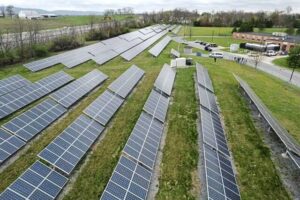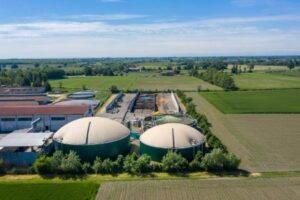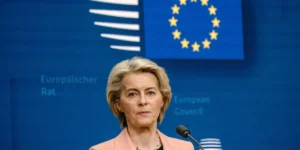Federal funds to help Michigan brighten up blight with new clean energy projects

With $130 million in federal grant funding, Michigan is set to help more local communities tap into renewable energy to lower costs, create jobs, and protect the environment.
MICHIGAN—Some of the most neglected properties in Michigan are set to transform into new beacons of clean energy, thanks to a $130 million grant from the Biden-Harris administration.
The federal funding—part of the US Environmental Protection Agency’s Climate Pollution Reduction Grant program—was awarded to Michigan in late July, namely to support the state’s overarching goal of shifting to 100% renewable energy production statewide by 2050.
And according to Gov. Gretchen Whitmer, the federal cash will be a real game-changer for accelerating the deployment of clean energy like wind, solar, and on-site battery storage.
“Michigan is committed to leading the future of clean energy so we can drive down utility costs for families, create good-paying jobs, and grow our advanced manufacturing economy,” Whitmer said in a statement announcing the funds. “Together, we can install more solar panels and wind turbines using well-paid American workers. We can make clean, reliable energy right here in America while lowering costs and keeping our natural resources safe for future generations.”
Here’s the Deal:
The Climate Pollution Reduction grant program, funded through the Inflation Reduction Act, provided nearly $5 billion in grants to states, local governments, tribes, and territories to develop and implement plans for reducing greenhouse gas emissions and other harmful air pollution.
Michigan received one of 25 grants that were awarded through the program in July, and now plans to use the funds to support a new statewide initiative to help meet its clean energy goals, while simultaneously driving down energy costs and creating more new jobs for Michiganders.
Specifically, state officials plan to use some of the federal funds to launch a new pilot program for Brownfield sites, which will incentivize developers to pursue renewable energy projects at otherwise abandoned, blighted, or contaminated properties that don’t generate any tax revenue.
How will it work?
Officials at the Michigan Department of Environment, Great Lakes, and Energy are using the funding to help expand its new, Renewable Ready Communities program, which is set to provide financial incentives to local and tribal governments that approve large renewable energy and battery storage projects—like wind turbines and solar arrays—within their jurisdiction.
The newly formed state Office of Climate and Energy, which led the federal grant application, is reportedly working with other state departments to make the new incentive program for Brownfield sites available in 2025, according to a recent press release announcing the grant.
The end goal: Transition the state to 100% renewable energy production by the year 2050, in accordance with new clean energy standards that were signed into law in Michigan last year.
“We’re truly thrilled,” said Michigan Chief Climate Officer Cory Connolly. “The EPA asked for the most important, catalytic climate actions from states, local governments, and tribes across the country. And that’s exactly what we included in our application—the success of our entire climate strategy hinges on deploying renewable energy at an unprecedented scale and pace.”
The funding will also support the state’s newly announced Renewable Energy Academy, which will provide local and tribal governments with technical assistance to improve planning, siting, and permitting for renewable energy projects, state officials said in a recent press release.
Connolly added: “If we can’t site renewable energy, then we can’t meet our goals.”
In addition to supporting workforce development programs through the state Department of Labor and Economic Opportunity, at least $10 million of the federal grant funding awarded in Michigan has been specifically reserved for clean energy projects in Tribal communities.
“Investments like this one not only help us address climate change—they also create jobs for our workers, drive economic growth and strengthen our energy security,” US Rep. Elissa Slotkin (D-Michigan) said in a statement. “This grant is a huge deal for our state.”
What’s next?
In recent years, federal funding has helped Michigan emerge as a nationwide leader in clean energy. The latest reports show that at least 45 new clean energy projects have been announced or moved forward in the state since the passage of the Biden-Harris administration’s clean energy plan—marking more new projects than any other state in the nation.
Those new clean energy projects have reportedly spurred at least $21.5 billion in investment and created or moved forward more than 20,000 new clean energy jobs in Michigan.
State officials said attracting more clean energy projects to Brownfield sites will enable that momentum to continue by driving investment into the communities that need it the most.
“If we want to address the climate crisis, reduce air pollution, advance environmental justice, and accelerate America’s clean energy transition, we must fund critical investments that will make a difference in our communities. That’s what we are doing with this investment,” US Rep. Debbie Dingell (D-Michigan) said in a statement.
According to federal officials, the recent grant funding, when combined, will also reduce greenhouse gas pollution by as much as 971 million metric tons of carbon dioxide equivalent by 2050—which is roughly the same as the emissions produced by 5 million homes over 25 years.
And additional $300 million is set to be awarded to tribes and territories later this summer.
In a statement announcing the federal grant funding, EPA Region 5 Administrator Debra Shore said that the Biden-Harris administration is “delivering unprecedented funding and resources” to help Michigan fight climate change, safeguard public health and grow its economy.
But ahead of Election Day, the future of those federal investments remains uncertain.
Vice President Kamala Harris has made clean energy a central focus of her presidential campaign. On the other side of the aisle, however, Project 2025 details plans to repeal the Inflation Reduction Act, which would strip away the funding that made these grants possible.
The rollback could not only stall Michigan’s clean energy momentum, but also threaten the thousands of jobs and billions of dollars in investment that is already flowing into Michigan.
“I’m proud to have helped pass new laws to invest in our clean energy future and create good-paying, union jobs in mid-Michigan,” US Rep. Dan Kildee (D-Michigan) said in a statement. “This new funding will ensure that our communities have the resources they need to protect the environment and bring clean energy manufacturing jobs back to Michigan.”
READ MORE: 10 things Michiganders should know about Project 2025
For the latest Michigan news, follow The ‘Gander on Twitter.
Follow Political Correspondent Kyle Kaminski here.








